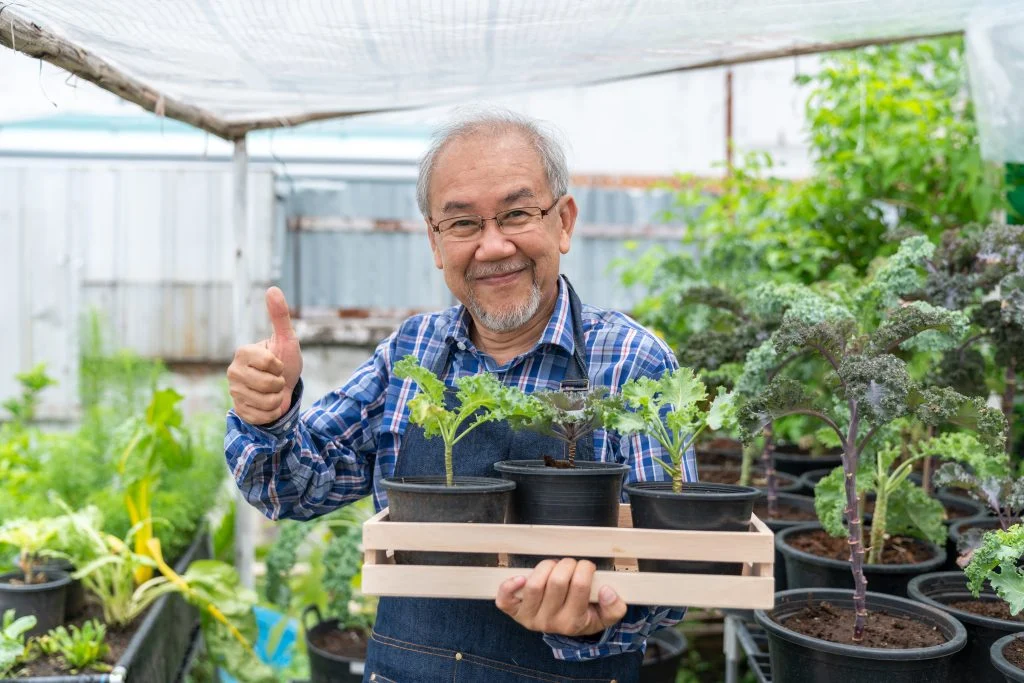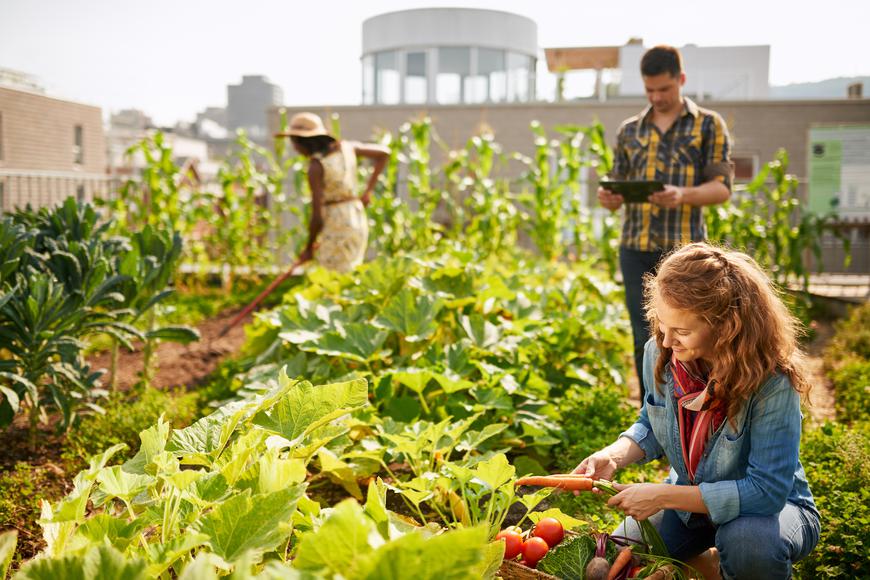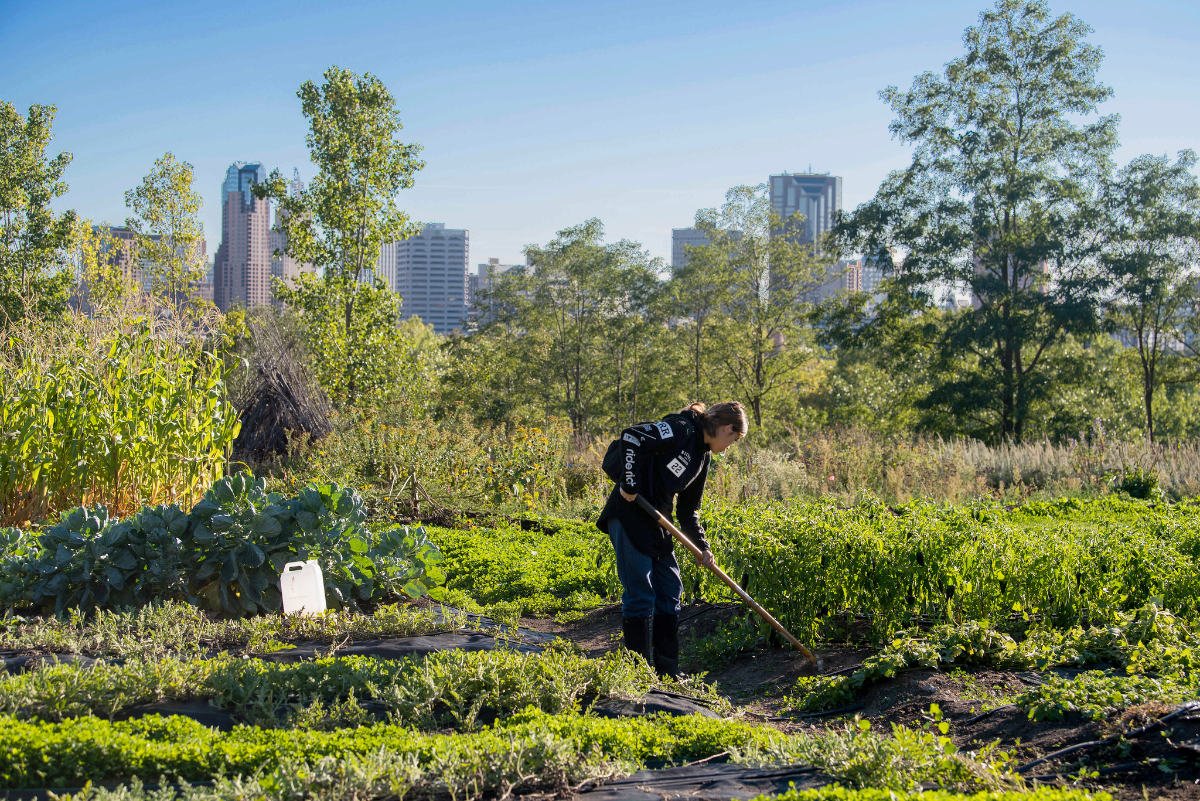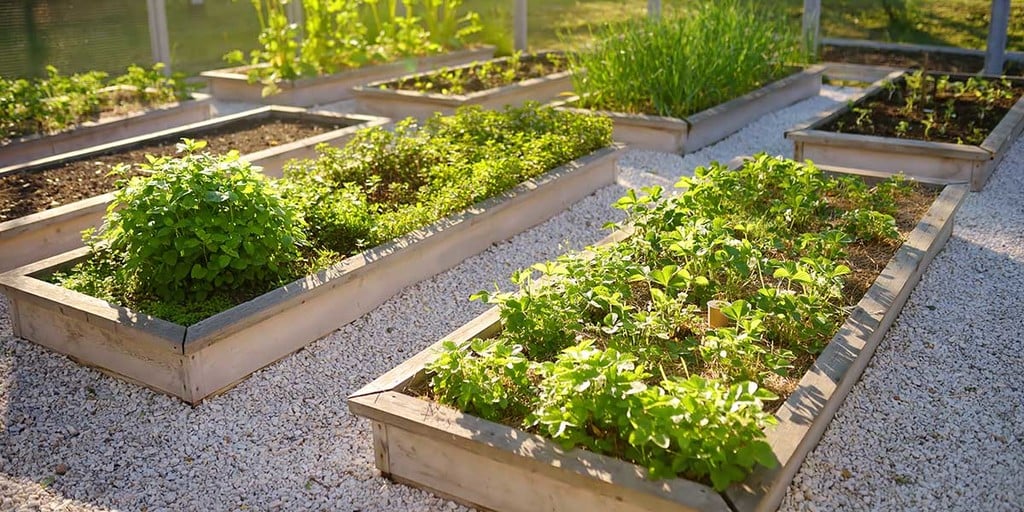The Rise of Urban Gardening
Urban gardening is transforming city landscapes, turning concrete jungles into vibrant, green oases. From rooftop plots to vertical farms, city dwellers are embracing the art of growing their own food, flowers, and herbs. This movement isn’t just about aesthetics—it’s about sustainability, community, and reconnecting with nature. For green-thumbed chefs, it’s a chance to cultivate fresh ingredients right at their doorstep.
Why Cities Are Going Green
The surge in urban gardening reflects a growing desire for eco-conscious living and fresh, local produce. With urbanization squeezing out green spaces, people are getting creative, using balconies, windowsills, and even parking lots to grow food. Posts on X highlight innovative projects like Mexico City’s vertical gardens on highway columns, showing how cities are prioritizing greenery. This trend is fueled by a post-pandemic shift toward self-sufficiency and wellness.
A Personal Connection to the Soil
I started my own urban garden on a tiny apartment balcony five years ago, with just a few pots of basil and cherry tomatoes. The first time I snipped fresh herbs for a homemade pasta dish, I felt a rush of pride—like I’d unlocked a secret superpower. That small act of growing my own food sparked a passion for urban gardening, and I’m not alone. Across cities, chefs and home cooks are discovering the joy of farm-to-table cooking without leaving their zip code.
The Benefits of Urban Gardening
Urban gardening offers a bouquet of benefits, from environmental impact to personal well-being. It’s not just about pretty plants—it’s about building healthier cities and happier people. Whether you’re a chef crafting gourmet dishes or a beginner tending a single pot, the rewards are undeniable.
Environmental Impact
Gardening in cities reduces carbon footprints by cutting down on food transportation. Plants also improve air quality, absorbing pollutants and producing oxygen. Community gardens, like those in Brooklyn’s Greenest Block competition, foster biodiversity and cool urban heat islands. These green patches make cities more livable, one seedling at a time.
Health and Wellness
Tending plants boosts mental health, reducing stress and fostering mindfulness. For chefs, growing ingredients ensures freshness and flavor that store-bought produce can’t match. Studies show that gardening increases physical activity and encourages healthier eating, especially in kids. Digging in the dirt is a workout for both body and soul.
Community Building
Urban gardens bring people together, creating shared spaces for neighbors to connect. Community plots, like those in Aba, Nigeria, transform urban life by blending nature with city living. These spaces spark conversations, share harvests, and build bonds, making cities feel like villages.
| Benefit | Description |
|---|---|
| Environmental | Reduces carbon emissions, improves air quality, and cools urban heat islands. |
| Health | Boosts mental well-being, encourages physical activity, and promotes fresh eating. |
| Community | Fosters social connections, shared harvests, and neighborhood pride. |
Types of Urban Gardening
Urban gardening isn’t one-size-fits-all—it’s a diverse practice tailored to city constraints. From tiny balcony setups to high-tech vertical farms, there’s a method for every space and skill level. Here’s a look at the most popular approaches.
Container Gardening
Perfect for small spaces, container gardening uses pots, planters, or even recycled buckets to grow herbs, vegetables, or flowers. It’s ideal for beginners and apartment dwellers. My own balcony garden started with a few containers, proving you don’t need much space to grow a feast. Flexibility and low cost make this a go-to option.
Vertical Gardening
Vertical gardens maximize space by growing plants upward on walls or trellises. They’re popular in cities like Mexico City, where highway columns double as green canvases. These setups are great for herbs, strawberries, or leafy greens, adding beauty and function to tight spaces.
Rooftop Gardening
Rooftop gardens turn unused building tops into productive plots. They’re common in cities like New York, where chefs grow ingredients for farm-to-table menus. These gardens require planning for weight and drainage but offer ample space for ambitious growers.
Community Gardens
Shared plots in parks or vacant lots, community gardens foster collaboration and food security. They’re perfect for city residents without private spaces. Programs like Brooklyn’s Greenest Block competition show how these gardens beautify and unite neighborhoods.
Hydroponics and Aquaponics
High-tech systems like hydroponics (soil-free, water-based) and aquaponics (fish-plant symbiosis) are gaining traction in urban settings. They’re space-efficient and yield high harvests, making them ideal for chefs seeking consistent supplies. However, they require investment and technical know-how.
| Gardening Type | Best For | Pros | Cons |
|---|---|---|---|
| Container | Small spaces, beginners | Affordable, flexible, easy to start | Limited yield, frequent watering |
| Vertical | Tight spaces, aesthetics | Space-saving, visually appealing | Setup costs, structural considerations |
| Rooftop | Large-scale, chefs | Ample space, high yields | High setup cost, maintenance |
| Community | Social growers, no private space | Community bonding, shared resources | Limited control, group coordination |
| Hydroponics/Aquaponics | Tech-savvy, high yields | Fast growth, year-round production | Expensive, technical expertise needed |
Tools and Supplies for Urban Gardening
To succeed, urban gardeners need the right tools. Whether you’re a chef growing microgreens or a hobbyist nurturing tomatoes, quality supplies make all the difference. Here’s a guide to the essentials.
Must-Have Tools
- Trowel and Pruners: For planting and trimming, choose ergonomic designs for comfort.
- Watering Can or Hose: A can with a fine spout works for small spaces; hoses suit larger plots.
- Pots and Planters: Opt for self-watering or breathable fabric pots for healthy roots.
- Soil and Compost: Use organic, nutrient-rich soil and compost for vibrant plants.
- Grow Lights: Essential for indoor or low-light setups, especially in winter.
Where to Get Supplies
Local nurseries, online retailers like Amazon, or specialty stores like The Home Depot offer quality gardening tools. For eco-friendly options, check out sites like Gardener’s Supply Company. Community gardens often share resources, so ask around locally.
Best Tools for Chefs
Chefs need precision tools for growing delicate herbs or microgreens. Brands like Fiskars offer durable pruners, while AeroGarden’s hydroponic kits are perfect for year-round indoor growing. Invest in soil testers to ensure optimal pH for flavorful produce.
SEO Strategies for Urban Gardening Blogs
For urban gardening enthusiasts running blogs, visibility is key. A well-optimized site can attract green-thumbed chefs and hobbyists alike. Here’s how to rank higher on Google, based on recent SEO trends.
Keyword Research
Target a mix of short-tail (“urban gardening”) and long-tail (“best herbs for balcony gardening”) keywords. Tools like Ahrefs or Google Keyword Planner can identify high-traffic, low-competition terms. LSI keywords like “sustainable gardening” or “small-space gardening” add depth.
Content Optimization
Write engaging, keyword-rich content with clear headings and meta descriptions (150–160 characters). Use internal links to related posts and external links to reputable sites like the USDA’s gardening resources. Regular blog updates, like seasonal planting guides, keep content fresh.
Social Media Integration
Share vibrant photos and tips on Instagram or Pinterest to boost engagement. Posts on X show how visual platforms amplify gardening content. Create videos or reels showcasing your garden’s progress to drive traffic and improve SEO.
Mobile-Friendly Design
Most gardeners browse on phones, so ensure your site is responsive with fast load times. Use Google PageSpeed Insights to optimize performance. A clean, navigable layout keeps visitors exploring longer, reducing bounce rates.
Challenges and Solutions in Urban Gardening
Urban gardening isn’t without hurdles, but every challenge has a workaround. Here’s how to tackle common issues faced by city growers.
Limited Space
Challenge: Apartments and small lots restrict growing area.
Solution: Use vertical or container gardening to maximize space. Stackable planters or wall-mounted systems work wonders.
Poor Soil Quality
Challenge: Urban soil is often contaminated or nutrient-poor.
Solution: Opt for raised beds or high-quality potting mix. Compost kitchen scraps for natural fertilizer.
Time Constraints
Challenge: Busy city life leaves little time for gardening.
Solution: Choose low-maintenance plants like herbs or succulents. Self-watering pots reduce upkeep.
Regulations
Challenge: HOAs or landlords may restrict gardening.
Solution: Check local laws and negotiate with property managers. Community gardens are a great alternative.
Green-Thumbed Chefs: Cooking with Homegrown Ingredients
For chefs, urban gardening is a game-changer. Growing your own herbs, vegetables, and edible flowers elevates dishes to new heights. The freshness of homegrown basil or microgreens can transform a simple salad into a Michelin-worthy plate.
Why Chefs Love Urban Gardening
Homegrown produce offers unmatched flavor and quality. Chefs like Dan Barber of Blue Hill at Stone Barns grow ingredients on-site, ensuring peak freshness. Urban gardens also allow experimentation with rare varieties, like purple basil or heirloom tomatoes, that aren’t always available commercially.
Popular Crops for Chefs
- Herbs: Basil, cilantro, and mint are easy to grow and versatile in recipes.
- Microgreens: Fast-growing and nutrient-dense, perfect for garnishes.
- Edible Flowers: Nasturtiums and pansies add color and flavor to dishes.
- Heirloom Vegetables: Unique varieties like Black Krim tomatoes impress diners.
A Recipe from the Garden
Last summer, I whipped up a caprese salad with my balcony-grown tomatoes and basil. The sweetness of the tomatoes, kissed by the sun, paired with fresh mozzarella was pure magic. Try this: layer sliced tomatoes, mozzarella, and basil leaves, drizzle with olive oil, and sprinkle with sea salt. It’s simple, but the homegrown ingredients make it unforgettable.
People Also Ask (PAA)
What is urban gardening?
Urban gardening involves growing plants in city environments, using spaces like balconies, rooftops, or community plots. It’s a sustainable way to produce food and flowers, often in small or unconventional spaces. This practice suits chefs, hobbyists, and eco-conscious city dwellers alike.
How do I start an urban garden?
Begin with a small space, like a windowsill or balcony, and choose easy crops like herbs or lettuce. Invest in quality soil, containers, and basic tools. Research light and water needs for your plants, and start with a manageable setup to build confidence.
What are the best plants for urban gardening?
Herbs (basil, parsley), leafy greens (lettuce, kale), and compact vegetables (cherry tomatoes, peppers) thrive in small spaces. Vertical gardens suit strawberries or ferns, while microgreens are great for quick harvests. Choose plants based on light and space availability.
Where can I buy urban gardening supplies?
Local nurseries, Home Depot, or online retailers like Amazon and Gardener’s Supply Company offer tools, seeds, and planters. Check community garden networks for shared resources or secondhand options to keep costs low.
Is urban gardening expensive?
It can be, but it doesn’t have to be. Start with affordable containers (even recycled ones) and basic tools. As one X user noted, focus on high-value crops like berries that are costly to buy. Over time, savings on groceries offset initial costs.
FAQ Section
How much space do I need for urban gardening?
You don’t need much— even a windowsill or small balcony works. Vertical or container gardening maximizes tiny spaces, letting you grow herbs, greens, or flowers efficiently.
Can I garden year-round in a city?
Yes, with indoor setups or grow lights, you can garden year-round. Hydroponics or aquaponics also enable consistent harvests, especially for chefs needing fresh ingredients.
What’s the easiest plant for beginners?
Basil is a great starter plant—it’s low-maintenance, grows fast, and thrives in small pots. Water it regularly and place it in a sunny spot for best results.
How do I deal with pests in an urban garden?
Use natural remedies like neem oil or introduce beneficial insects like ladybugs. Regularly inspect plants and remove affected leaves to keep pests at bay.
Are urban gardens safe for growing food?
Yes, but test soil for contaminants, especially in older urban areas. Use raised beds or fresh potting mix to ensure safe, healthy produce.
Conclusion: Growing a Greener Future
Urban gardening is more than a trend—it’s a movement that’s reshaping cities and empowering chefs and home growers alike. From reducing carbon footprints to serving farm-fresh dishes, the impact of a single pot or plot is profound. Whether you’re a green-thumbed chef dreaming of homegrown garnishes or a city dweller craving a connection to nature, urban gardening offers a path to a greener, tastier future. Start small, experiment, and watch your city bloom.



